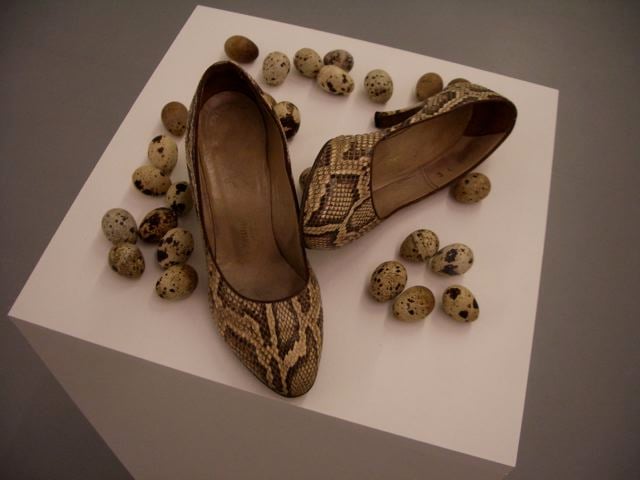
© » KADIST
Hans-Peter Feldmann
The types of objects Feldmann is interested in collecting into serial photographic grids or artist’s books are often also found in three dimensional installations. Verging on a form of fetichism, his shoe collections are a case in point and indeed, for some exhibitions, he even asked gallery employees for their shoes. Against authorship and the commodification of art, he never gives titles or dates to his works which have infinite edition possibilities.
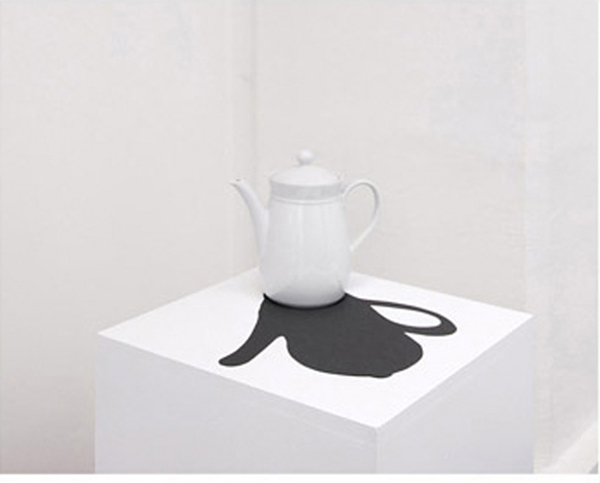
© » KADIST
Hans-Peter Feldmann
The types of objects Feldmann is interested in collecting into serial photographic grids or artist’s books are often also found in three dimensional installations. Against authorship and the commodification of art, he never gives titles or dates to his works which have infinite edition possibilities. This mise en scène of found kitchenware also exists with a rounder and flatter plain modern white porcelain teapot.
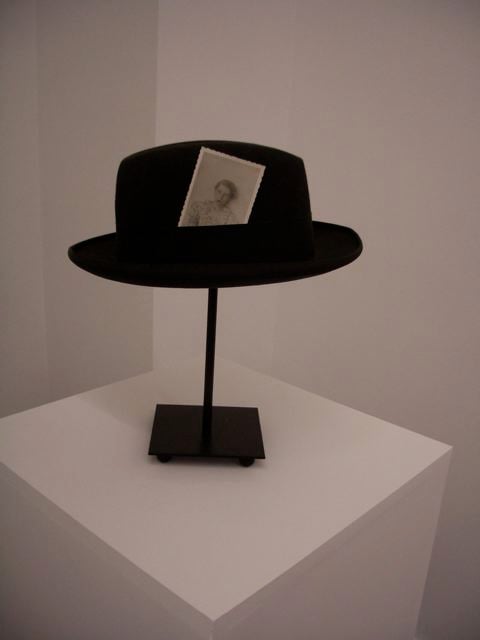
© » KADIST
Hans-Peter Feldmann
The types of objects Feldmann is interested in collecting into serial photographic grids or artist’s books are often also found in three dimensional installations. Hats and photographs are regularly part of his appropriations and arrangements. He famously made numerous trips to England in search of old photographs when he was an antique dealer, and then worked in a gift store with his wife when he left the art world in the 1980s.

© » KADIST
Peter Friedl
Peter Friedl’s projects place aesthetic questions within an expanded field that takes into account the social, political and philosophical context. This textile piece quotes and diverts a flag with a red background and the central star of the Kurdistan National Liberation Front (ERNK, a military organization linked to PKK, founded in 1985 and disbanded in 2000), and not the national flag of Kurdistan. The artist became interested as from 1994, when the town of Lice was destroyed by the Turkish army and the PKK was expelled from Germany.

© » KADIST
Peter Robinson
Defunct Mnemonics (2012) plays off woodworking traditions found in indigenous art in order to create a body of formally minimal objects that are both beautiful in their restraint and profoundly moving in their associations with the totemic. Resembling large pick-up-sticks, the complete work is comprised of 126 vertical sculptures wrapped in fabric with alternately monochromatic and graphically patterned dyes and prints. Leaning against a wall and arranged side-by-side, they could be mistaken as highly decorated mallets for use in an undetermined ritual or game.
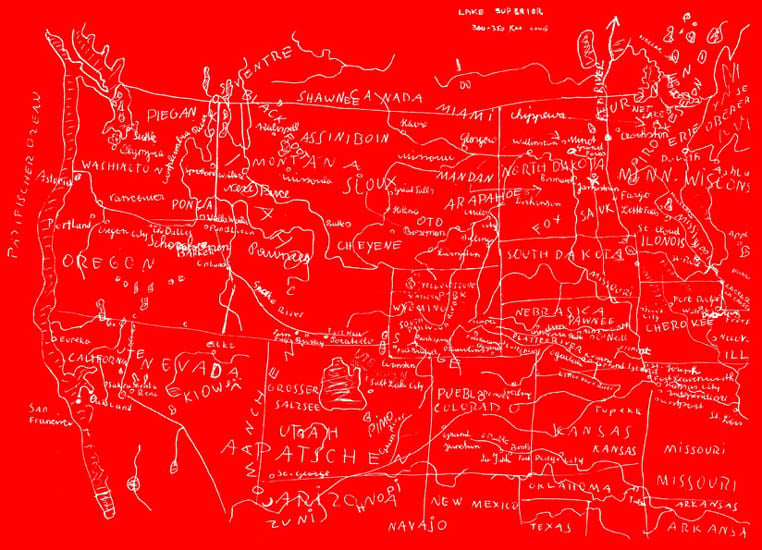
© » KADIST
Peter Friedl
Drawing & Print (Drawing & Print)
Map 1969-2005, a poster glued on the wall, questions space in its relation to geography. On a red background, a free-hand drawing in white refers to the aesthetics of maps. Map 1969-2005 is not an accurate map of the United States, but one that combines mapping, overlaps and merges diverse elements: Oregon, Lake Superior, San Francisco, Cheyenne, Missouri, Zuni, Navajo, Texas, Shawee, Colorado, Piegan, Canada, Miami, etc.
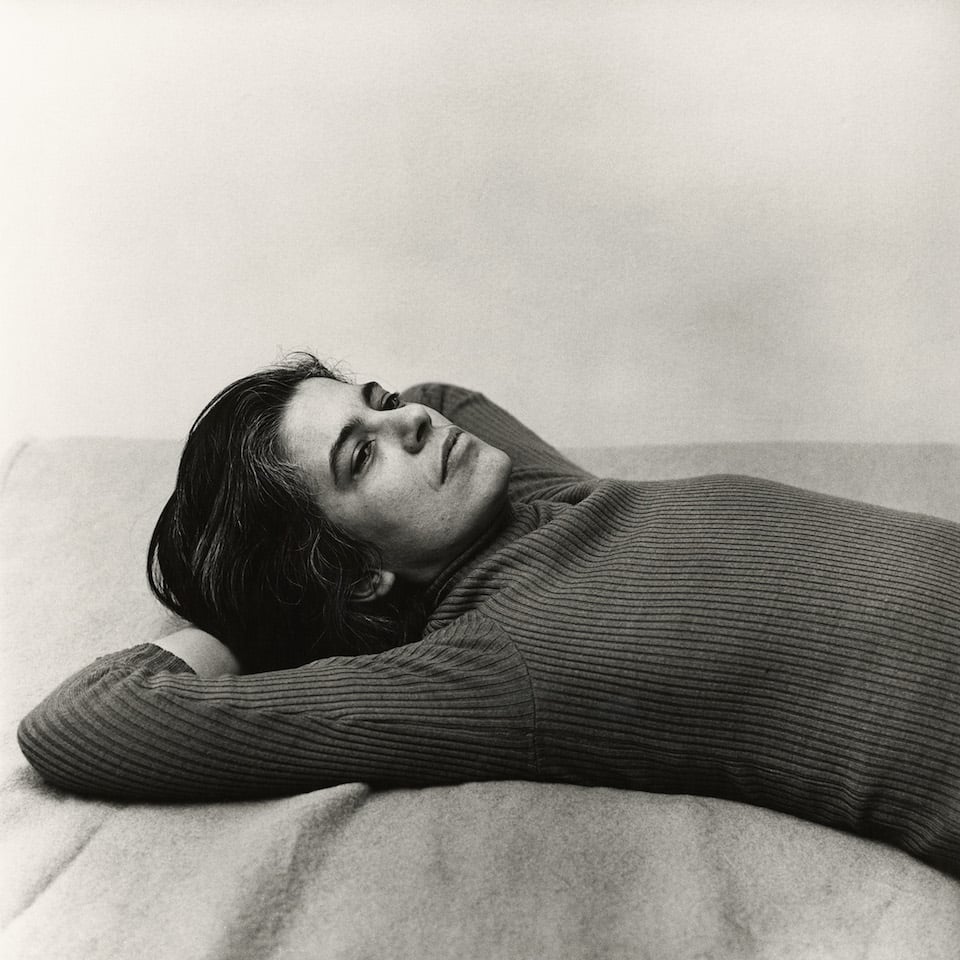
© » KADIST
Peter Hujar
Susan Sontag, the author of On Photography and Regarding the Pain of Others, was captured through Hujar’s now-iconic photograph in a relaxed yet pensive pose. A friend and supporter of his work as well as his subject, Sontag wrote the introduction for Hujar’s only book published during his lifetime: Portraits in Life and Death.

© » KADIST
Hana Miletic
Incompatibles (Unitas) is made from discarded samples of the yarns that are exported from Croatia and not actually available in the local market. The textile industry in former Yugoslavia has essentially closed down under pressure from Indian and Chinese industries and as a result of the botched privatization of once state-owned factories. There is only one factory remaining in Zagreb producing these yarns.

© » KADIST
Hank Willis Thomas
South Africa Righteous Space by Hank Willis Thomas is concerned with history and identity, with the way race and ‘blackness’ has not only been informed but deliberately shaped and constructed by various forces – first through colonialism and slavery, and more recently through mass media and advertising – and reminds us of the financial and economic stakes that have always been involved in representations of race.

© » KADIST
Hank Willis Thomas
Drawing & Print (Drawing & Print)
Shot in black and white and printed on a glittery carborundum surface, Black Hands, White Cotton both confronts and abstracts the subject of its title. As with many of his works, the artist has taken a found image and manipulated it to draw out and dramatize the formal contrast between the black hands holding white cotton. Cotton, of course is one of the most familiar fabric sources to us, and becomes incredibly soft once processed.
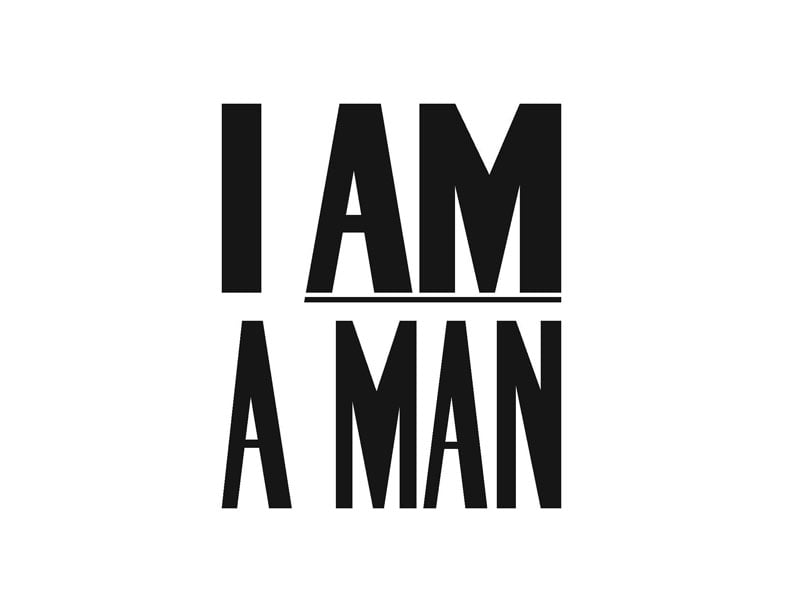
© » KADIST
Hank Willis Thomas
The image is borrowed from protests during Civil Rights where African Americans in the south would carry signs with the same message to assert their rights against segregation and racism. Historically, in countries such as the US and South Africa, the term “boy” was used as a pejorative and racist insult towards men of color, slaves in particular, signifying their alleged subservient status as being less than men. In response, Am I Not A Man And A Brother?

© » KADIST
Hank Willis Thomas
Bread and Roses takes its name from a phrase famously used on picket signs and immortalized by the poet James Oppenheim in 1911. “Bread for all, and Roses, too’—a slogan of the women in the West,” is Oppenheim’s opening line, alluding to the workers’ goal for wages and conditions that would allow them to do more than simply survive. Thomas’ painting includes several black, white, brown, yellow, and red raised fists—clenched and high in the air in the internationally recognized symbol of solidarity, resistance, and unity.

© » KADIST
Hank Willis Thomas
Drawing & Print (Drawing & Print)
Intentionally Left Blanc alludes to the technical process of its own (non)production; a procedure known as retro-reflective screen printing in which the image is only fully brought to life through its exposure to flash lighting. Using a found photograph depicting a passionate crowd of African Americans—their attitude suggesting the fervor of a civil-rights era audience— Intentionally Left Blanc reverts in its exposed, “positive” format to an image in which select faces are whitened out and erased, the exact inverse of the same view in its “negative” condition. This dialectic of light and dark re-emerges when we view the same faces again, only this time black and featureless, a scattering of disembodied heads amidst a sea of white.

© » KADIST
Hank Willis Thomas
Drawing & Print (Drawing & Print)
Thomas’ lenticular text-based works require viewers to shift positions as they view them in order to fully absorb their content. Meaning, therefore, changes depending on one’s perspective—and in the case of Thomas’ installation, only emerges when one knows that there is always something hidden, always more to one of his works than immediately meets the eye. This lenticular print with text shifts as you walk in front of it from its title, “Black Imitates White” to the inverse, “White Imitates Black”(and some other possibilities in between) emphasizing that there are always at least two perspectives to the same scenario, and thereby encouraging us as viewers to consider them all together rather than trying to identify with any one subjectivity.

© » KADIST
Hank Willis Thomas
Like many of his other sculptural works, the source of I am the Greatest is actually a historical photograph of an identical button pin from the 1960s. I am the Greatest presents the famous quote by Mohammad Ali to think about his important presence in the African American community. In dialogue with the painting I am a Man, also in the Kadist collection, this assertion that begins the same way takes the line from the protest poster several steps further.
Hank Willis Thomas
- location: New York, New York
- year born: 1976
- gender: male
- nationality: American
- home town: Plainfield, New Jersey
Hans-Peter Feldmann
- location: Düsseldorf, Germany
- year born: 1941
- gender: male
- nationality: German
- home town: Dusseldorf, Germany
Peter Friedl
Many of the projects of Peter Friedl, in their heterogeneous medium and style, function as intersection points between countless lines of thought and reference, creating a vast didactic network where dialogues simultaneously merge with critical logic and narrative...
Peter Robinson
Peter Robinson is an artist whose work explores the various cross-sections between materiality, identity, and the indigenous...
Hana Miletic
Hana Miletic is a Croatian artist living in Brussels with a background in documentary and street photography...
Peter Hujar
Before American photographer Peter Hujar passed away from AIDS in 1987, he was a part of a group of New York-based artists, writers, and musicians who defined the downtown scene in the 1970s...
-
1970-1979
Peter Hujar
1975Susan Sontag, the author of On Photography and Regarding the Pain of Others, was captured through Hujar’s now-iconic photograph in a relaxed yet pensive pose...
-
2000-2009
Peter Friedl
2001Peter Friedl’s projects place aesthetic questions within an expanded field that takes into account the social, political and philosophical context...
Peter Friedl
Drawing & Print
2005(Drawing & Print) Map 1969-2005, a poster glued on the wall, questions space in its relation to geography...
-
2010-2019
Peter Robinson
2012Defunct Mnemonics (2012) plays off woodworking traditions found in indigenous art in order to create a body of formally minimal objects that are both beautiful in their restraint and profoundly moving in their associations with the totemic...
Hank Willis Thomas
2012Bread and Roses takes its name from a phrase famously used on picket signs and immortalized by the poet James Oppenheim in 1911...
Hank Willis Thomas
Drawing & Print
2012(Drawing & Print) Intentionally Left Blanc alludes to the technical process of its own (non)production; a procedure known as retro-reflective screen printing in which the image is only fully brought to life through its exposure to flash lighting...
Hank Willis Thomas
Drawing & Print
2012(Drawing & Print) Thomas’ lenticular text-based works require viewers to shift positions as they view them in order to fully absorb their content...
Hank Willis Thomas
2012Like many of his other sculptural works, the source of I am the Greatest is actually a historical photograph of an identical button pin from the 1960s...
Hank Willis Thomas
2013The image is borrowed from protests during Civil Rights where African Americans in the south would carry signs with the same message to assert their rights against segregation and racism...
Hank Willis Thomas
2014South Africa Righteous Space by Hank Willis Thomas is concerned with history and identity, with the way race and ‘blackness’ has not only been informed but deliberately shaped and constructed by various forces – first through colonialism and slavery, and more recently through mass media and advertising – and reminds us of the financial and economic stakes that have always been involved in representations of race....
Hank Willis Thomas
Drawing & Print
2014(Drawing & Print) Shot in black and white and printed on a glittery carborundum surface, Black Hands, White Cotton both confronts and abstracts the subject of its title...
Hana Miletic
2019Incompatibles (Unitas) is made from discarded samples of the yarns that are exported from Croatia and not actually available in the local market...
